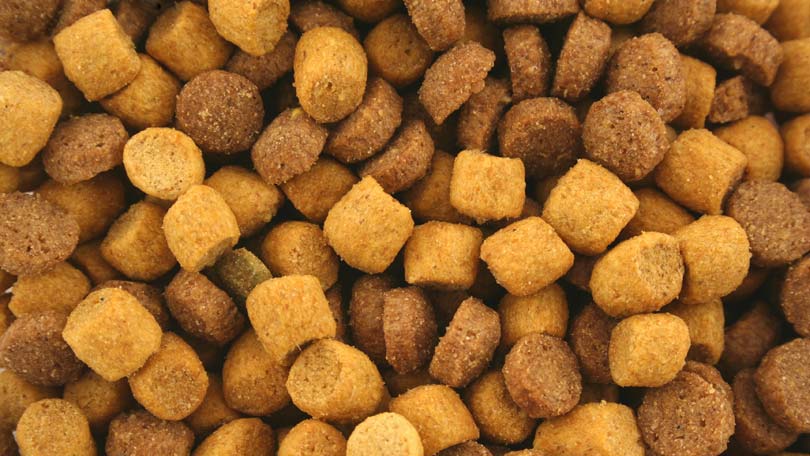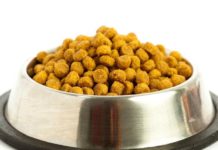
As the name suggests, “additive” is any substance that is added to food or its ingredients in order to modify its preservation characteristics or its organoleptic properties (that is the properties related to food color, odor and taste). In this sense, additives are substances extraneous to the genuine nature of food and, with the only exception of certain natural additives, such as vitamin C and vitamin E, they do not have any nutritional value.
Nowadays additives are more and more widely used in dog food, sometimes for good purposes, other times to mask the low quality of dog food. This is the reason why the less additives are in dog food, the higher is usually its quality. However additives, and especially chemical additives, do not only influence the preservation and organoleptic characteristics of pet food, but also its healthiness. The use of certain additives in dog food has been banned or restricted in many countries due to their well-recognized toxicity, while the use of other additive substances is still controversial as there are not yet enough data to justify their withdrawal or, at least, their restriction. And this should not be surprising, since the dog food industry is an extremely profitable industry and unfortunately, in the modern society, business interests come before our pet’s health. So our dogs will continue taking in a number of potentially dangerous additives with commercial dog food, al least until the evidence of their toxicity will become incontrovertible. It is worthwhile to remember, however, that not all additives in dog food are bad: some of them in fact, such as probiotics, are added to give dog food therapeutic or beneficial properties. And, as has been already said, there are also natural additives that, although not added for therapeutic purposes, are not harmful at all and are helpful to improve certain properties of dog food. Demonizing all additives is therefore not correct.
From a classification point of view, additives in dog food can be divided into different groups on the basis of the effect that they have on food properties. The main classes of dog food additives include: 1) preservatives and antioxidants, 2) binders and emulsifiers, and 3) coloring and flavoring agents. Other classes of dog food additives exist as well, such as the above mentioned probiotics, but they are less widely used and only for particular purposes. The three groups of additives listed above, on the contrary, are almost invariably used in the preparation of commercial dog food and are also those that, most often, have been given and continue to give rise to debate.
Preservatives and antioxidants are added to dog food to prolong its shelf life and to prevent the proliferation and growth of certain microrganisms (molds and bacteria), which can have negative effects on some sensory and nutritional properties of the food, as well as on the dog’s health. There are two main classes of food preservatives and antioxidants: natural and artificial. Natural preservatives include vitamin E (mixed tocopherols), vitamin C (ascorbic acid), rosemary extract, clove oil and other spices. Although natural preservatives do not guarantee a shelf life as long as that provided by artificial preservatives, their use is not associated with any health risk for dogs. On the contrary, artificial preservatives, such as BHA, BHT, propyl gallate and ethoxyquin, although having higher preservation properties than natural preservatives, are suspected or even known to cause chronic toxicity. So, whenever possible, it would be advisable to provide dogs with food added only of natural preservatives and to avoid artificial preservatives that, in the long run, may have a negative impact on dogs’ health.
As regards binders and emulsifiers, corn and wheat gluten (binders) and glyceryl monostearate (emulsifier) are the most used in commercial dog food. These substances are not toxic by themselves, but have almost no nutritional value. In addition, it should not be forgotten that glyceryl monosteatate can contain BHT as a preservative and this is a sufficient reason to avoid this ingredient in dog food.
Finally a mention should be made of coloring and flavoring agents that are added to dog food to make the product more appealing to pet owners and more palatable to their dogs. Needless to say that a high content of coloring and flavoring agents in dog food often reflects its low quality. In other words, dog food manufacturers often add coloring and flavoring agents to their products in order to mask the low quality of the ingredients they use and to make palatable a food that dogs would never eat otherwise. Coloring agents used in commercial dog food are usually of artificial nature. Among them, the most widely used include Red 40, Yellow 5 and Yellow 6. To date no evidence of substantial toxicity has been proven for these food dyes, except for the occurrence of mild allergic reactions to Yellow 5 and Yellow 6 in predisposed individuals. However, since it is always better to use caution rather than risking the health of one’s dog, it would be advisable, whenever possible, to feed dogs commercial food not containing added artificial coloring agents. As concerns flavoring agents, these can be either natural such as spices and Animal Digest (a cooked broth made from often unspecified animal parts), or artificial such as phosphoric acid and others chemicals. Regardless of the potential toxicity of certain chemical flavorings, it is important to remember that flavoring agents are often added by dog food manufacturers to mask the unpleasant or lacking odor or taste of their product, which is a sign of low quality pet food.
A final point should be made about the toxicity tests normally required for food additive approval. While in most countries tests are required by law to assess the acute and chronic toxicity of any individual additive, the same tests are not required to assess the effects deriving from the concurrent intake of many different additives with the same food. So it should be not ruled out that certain harmful interactions between some of the most commonly used additives in dog food or even between food additives and food components may occur. That is why using caution is always wise and buying commercial dog food with fewer or no additives is always the best choice.





